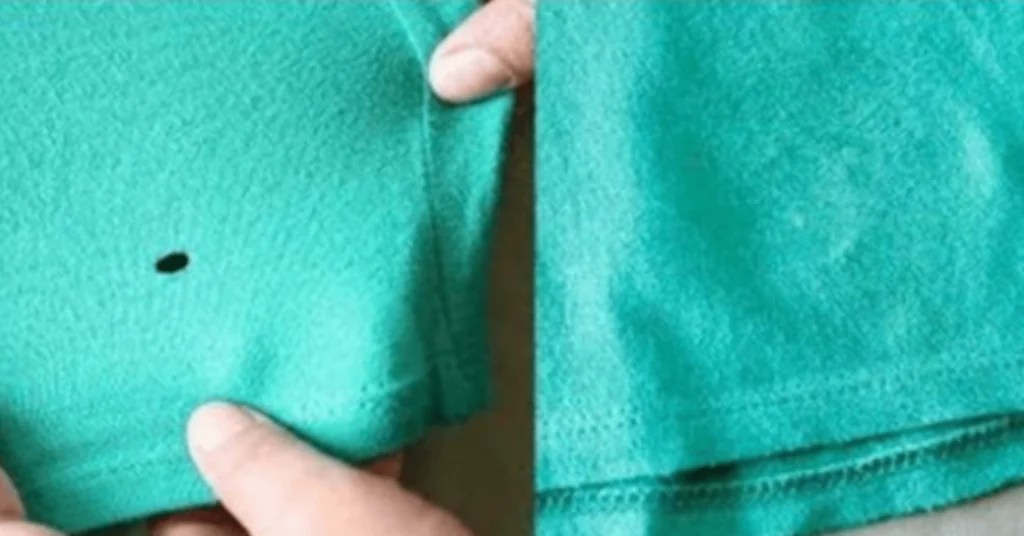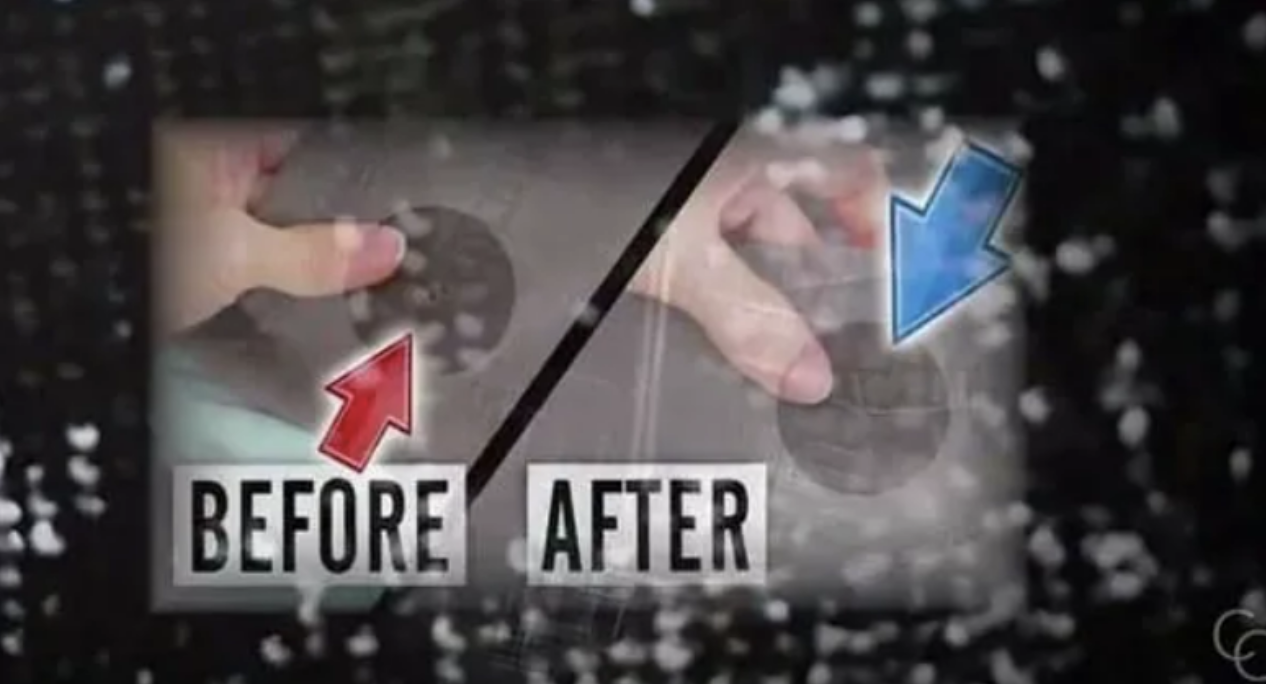If you discover a hole in your beloved piece of clothing, there’s no need to fret! You don’t have to possess expert sewing skills to fix it. In fact, you can mend those pesky pinpricks in just a few minutes using a simple method that requires no visible stitches. So, let’s dive in and learn how to repair your favorite garments without any hassle.

What Causes These Holes?
Moths often take the blame for creating these frustrating holes, but they’re not the only culprits. The holes can also result from regular wear and tear, snags from everyday items and accessories, zippers, belts, the washing machine, chlorine bleach, and rough surfaces. Don’t worry, we’ve got you covered with some tips to prevent these holes from appearing in the first place!
How to Prevent Holes from Ruining Your Clothes
Here are a few simple tips to help you keep those annoying holes at bay:
- If the holes frequently appear at the bottom of your shirts, belt buckles rubbing against the fabric might be the cause. Consider going beltless, adjusting the belt’s position regularly, or smoothing any rough edges with sandpaper.
- When tucking your shirts into jeans, be mindful of the zipper, as it can cause holes. To prevent this, always zip up your jeans, hoodies, and other garments before washing them. Also, remember to close bras before washing to prevent their metal clasps from snagging onto other clothing. Using a washing bag can keep bras separate, particularly if they tend to unclasp during washing.
- Overloading the washing machine can also lead to holes in your clothes. Remember to turn items with beads, buttons, or other decorations inside out before washing. Additionally, keep delicate materials like cotton and silk separate from sturdier pieces such as sheets and towels. Opt for a gentle spin cycle for delicate items.
- Excessive use of chlorine bleach can result in holes in your clothing. Consider using eco-friendly alternatives like vinegar, citric acid, or baking soda instead.
- Moths are notorious for causing holes in wool, silk, and leather, but they can damage other fabrics too. To repel moths, you can place dried lavender in mesh bags or use essential oils like mint. In case of a severe infestation, wash your clothes in warm water and clean your closet with vinegar.
- Lastly, watch out for rough surfaces like bricks, nails, wood, and stone. Accidental bumps or rubbing against these surfaces can lead to snags and holes.

The No-Sew Hole Repair Method
Now that you know how to prevent these holes, let’s move on to fixing them. You can repair small holes in your clothes without sewing by following these easy steps:
What You’ll Need:
- Clothes with holes measuring 5 mm or less
- An iron
- Fusible bonding web
- A large piece of wax paper
Steps:
- Turn the damaged piece of clothing inside out, with the hole facing outwards, and place it on an ironing board.
- Cut a piece of fusible bonding web slightly larger than the hole.
- Push both sides of the hole together and place the fusible bonding web over it. Then, cover the same spot with the wax paper.
- Set your iron to the “wool” setting and gently press it over the wax paper.
- Check if the hole has disappeared. If not, repeat the ironing process two or three more times. Your damaged clothes will be as good as new!

You don’t need to be an expert seamstress to repair your favorite clothes. With a little practice and the no-sew hole repair method, you can mend those annoying pinpricks in just a few minutes. Remember to share this article with friends and family on Facebook. Spread the love and joy of repairing clothes without a stitch!





